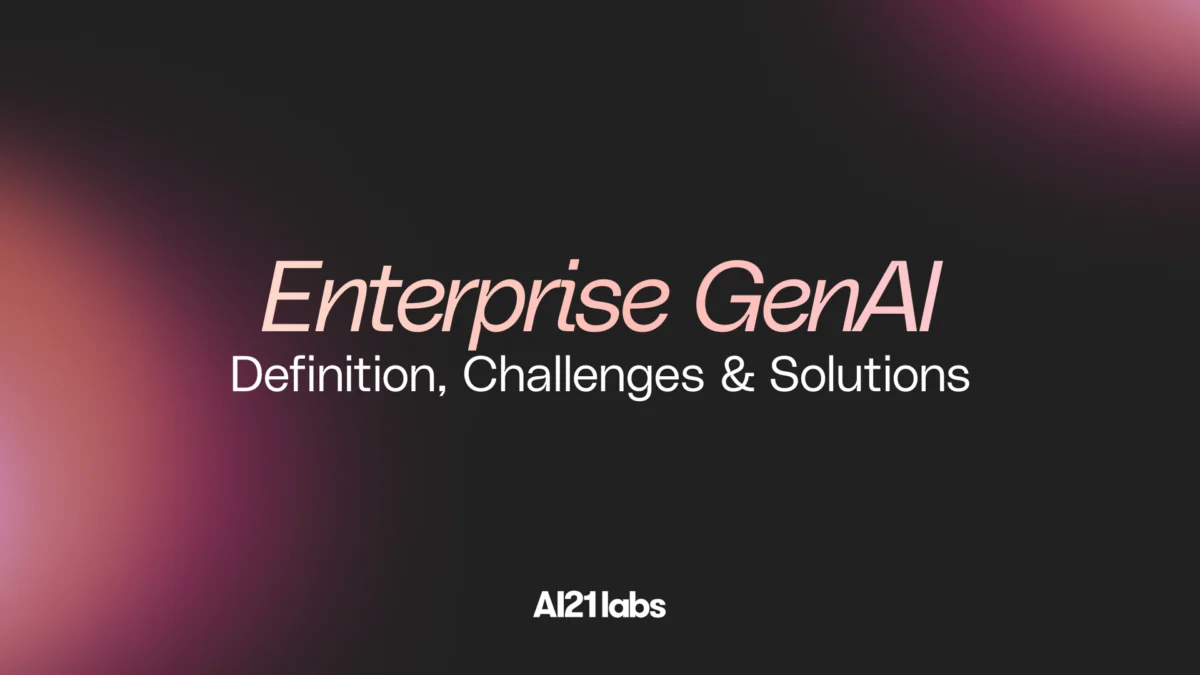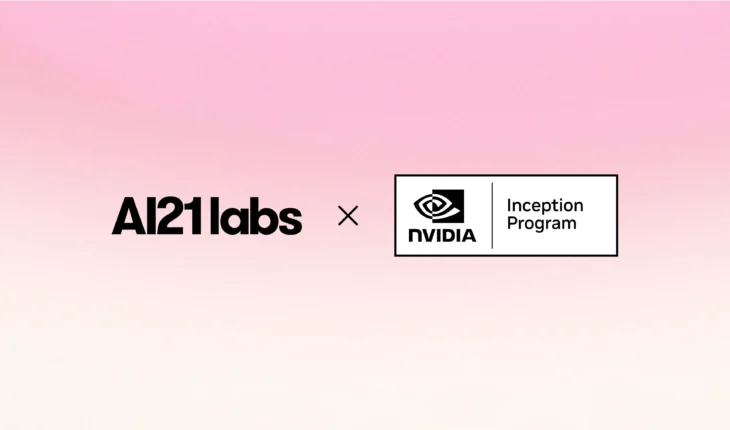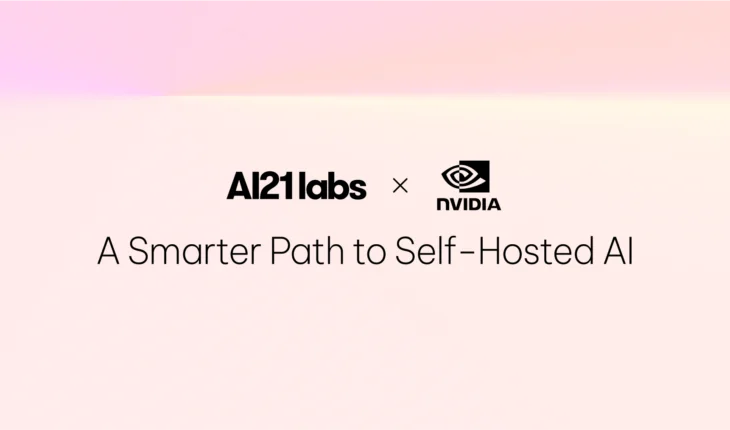Table of Contents

Enterprise GenAI: Definition, Challenges, and Solutions
Already one year old, mainstream AI is this decade’s major disruptor: whether it’s the International Monetary Fund predicting that AI will affect nearly 40% of all jobs, or Meta incurring significant controversy by building a fully open-source general intelligence model. While 2024 promises to be the year of AI adoption for those pushing for a competitive edge, the sheer variety of use cases can make general AI difficult to visualize and control – not to mention more prone to error.
This article will outline some of the concerns facing organizations today, and how enterprise AI is evolving to meet them.
How Small-Scale Models Are Defining Enterprise AI
Enterprise AI is the focused application of artificial intelligence to improve efficiency, enhance performance, and drive innovation across teams. In the backdrop of general-purpose AI’s large-scale models, enterprise AI is increasingly pulling ahead in favor of hyper-focused, task-specific models (TSMs).
General-purpose AI, in this context, refers to the mainstream large-scale models that have been dominating headlines since OpenAI’s ChatGPT became the breakout industry leader. Open AIs foundational model works by analyzing each word inputted and sequentially predicting subsequent words – in this way, complete responses are created. Trained on an extensive array of Wikipedia entries, books, and internet resources, these types of LLMs are able to break language down into a series of probability exercises. This technique involves an immense volume of training data, exemplified by Google’s latest AI model using nearly 3.6 trillion tokens.
All this data is necessary for general-purpose AI models as they operate as probability engines, assigning likelihoods to potential responses. However, if the ingested information is biased, incomplete, or problematic, the outputs can be unreliable at best, and offensive at worst. These hallucinations – fabricated data that appear authentic – occur because LLMs lack any internal understanding of the world they’re describing. As the datasets of LLMs increase, so too does their capacity to act in unusual ways. Microsoft’s Bing, powered by GPT-3, not only utilizes the LLM but also integrates search engine results. Within this high-input approach, it’s been found that LLMs can transcend their initial programming and generate content in languages they weren’t explicitly trained on. This emergent behavior, while not fully understood, highlights the inherent unpredictability of large-scale, unrefined AI engines.
The high-volume, spray-and-pray approach of general-purpose AI has become a source of real disappointment. Faced with underwhelming ROI and an unacceptably high risk of inaccuracies, organizations are increasingly applying their approach to more tightly-focused datasets. Enter, enterprise AI.
Instead of a single jack-of-all-trades, enterprise AI offers task-specific models that identify the natural language capability required – for example, context-rich answers – and the team it will be deployed to, such as customer support. This core focus is then supported by further verification mechanisms. By segmenting NLP into its core tasks and relying on internal datasets, teams are able to build their own customized integration of TSMs that provide reliable and grounded results – at a fraction of the cost.
General Purpose AI vs. Enterprise AI: A Direct Comparison
Enterprise AI is increasingly proving itself to be the high-impact solution that regular AI promised to be. To understand why, both approaches deserve a breakdown of scope, deployment, and integration potential.
| General-Purpose AI | Enterprise AI | |
| Goal | Models are built to extract and utilize as much information as possible, encompassing research, writing, mathematics, translation, and coding. | Models are built to target specific, high-value use cases within a team or project. |
| Data sources and transparency | Web scrapers incorporate the entirety of text and images on the internet; other sources include books and articles. Generative AI is increasingly being used to create synthetic data to train other models. Minimal transparency for end-users. | Models are trained from internal documents and therefore hyper-focused on relevant context. Complete transparency when inadequate data is provided, rather than guesswork. |
| Implementation within a team/project | A team must self-select their own issues, before spending significant time fine-tuning answers with prompt engineering. | Recognizes that organizations require more than raw AI engines. Support is offered to identify the highest-ROI use case in your organization. |
| Time to production | Inhouse projects must go through a lengthy five-stage process of Problem Scoping, Data Acquisition, Data Exploration, Modeling, and Evaluation. Only afterward can the project start realizing ROI. | Pre-tuned solutions allow for rapid integration and testing, skipping the headaches of production and data handling. Executive buy-in is immediately on the table. |
| Security | Input data is either handled by a fully in-house model – or, in the case of completely third-party tools, submitted to a model with no transparency. Users have no idea whether sensitive data may reappear as outputs. | Data is kept internal to the organization and only accessed on an as-needed basis. |
| Integrations | Demands a degree of technical proficiency and understanding of your enterprise’s backend. The risk of infrastructural disruption is high. As a result, the integration process can suffer from significant delays in complex organizational structures. | Offers deep integration with existing enterprise systems such as GCP and AWS. Plug-and-play APIs interact seamlessly with other components of a tech stack. |
Revealing LLM’s Challenges – and Enterprise AI’s Solutions
Without the further streamlining of enterprise-specific training, foundational AI models are left woefully unprepared for real-world applications. In 2023, the now-infamous Mata v. Avianca legal case took a turn for the unexpected when the claimant’s lawyer – tasked with proving his client’s injury during an Avianca flight – used ChatGPT in his legal research. As a result, the court was presented with some of the following judicial decisions: Varghese v. China South Airlines; Shaboon v. EgyptAir; and Estate of Durden v. KLM Royal Dutch Airlines.
Not only did OpenAI’s LLM create all of these, but it further provided fake internal citations and quotes – even claiming they were available in major legal databases upon further questioning. Partly due to the legitimacy of its formatting, the lawyer responsible was completely unaware of artificial general intelligence’s occasional habit of generating false content.
Below, we take a look at several AI-related challenges facing organizations, and the solutions that enterprise AI has to offer.
The Challenge of Inaccurate Outputs
AI’s promise of human-like communication comes at an incredible cost: trust. Ultimately, a successful AI project hinges on retaining trust – both within a company and throughout its wider customer base. It’s why, according to a 2023 KPMG study, approximately 73% of individuals worldwide express apprehension about the potential dangers associated with AI. As the continued acceptance of AI is fundamentally dependent on trust, hallucinations threaten to completely eclipse this early optimism.
AI models, despite being trained on large datasets, are not always able to encompass every conceivable real-world situation. To address this, a process called grounding can enhance the model’s training with extra, context-relevant information. This approach broadens the model’s comprehension and boosts its capability to perform efficiently in a variety of practical scenarios. However, grounding the entirety of a foundational LLM model would incur eye-watering costs.
This is how task-specific models can offer high accuracy at minimal cost – by narrowing its generative power down to a specific task, it becomes possible to provide enough external context to eradicate knowledge gaps. These Retrieval Augmented Generation (RAG)-supported LLMs further allow organizations to provide more context in the form of their own internal documentation. The retrieval engine can then search through the provided knowledge base, identify relevant similarities between a user’s query, and provide answers of superior accuracy.
Combating a Lack of Specialized Expertise
The arms race for AI talent has seen a stubborn gap remain between enterprises’ AI needs and the current capabilities of their workforce. While long-term strategies are nice, they do not assist organizations hoping to realize their AI potential today. This is where the AI-as-a-service model is drastically accelerating adoption.
One of the primary ways that Task Specific Models reduce technical complexity is by transforming raw AI engines into customer-centric, task-focused language models. That way – instead of having a taskforce build your organization’s own foundational model on Sagemaker – a pre-existing model is not only already available, but deployable with minimal complexity.
For example, some common LLM tasks that promise the highest ROI are:
- Retrieving Contextual Answers
- Summarizing
- Paraphrasing
- Grammatical Error Correction (GEC)
- Semantic search
Each of these can be reduced in complexity – enterprise AI addresses this by streamlining the data pipeline. With contextual answers, for instance, the input parameters can be whittled down to two – that is, ‘context’ for the relevant internal document – and ‘question’, for the relevant demand. This way, users aren’t required to be prompt engineers. Enterprise AI is built to factor in the background processing, letting the user simply provide their context and question.
It’s critical to actively reduce the burden on your AI team where you can. Go-to-market solutions drastically reduce this by providing access to pre-trained models via plug-and-play API.
Safety Concerns
Just as inaccurate or harmful outputs significantly degrade end-user trust, AI is deeply entrenched in a wider conversation around security. The biggest privacy concern keeping most companies awake at night is the accidental disclosure of sensitive information through prompts.
To ensure safety in enterprise LLMs, rigorous measures are implemented to reduce instances where benign inputs lead to detrimental outputs. While harmful outputs are rare, enterprise AI must maintain a focus on preventing harmful outputs being created from harmless inputs. This is achieved by continuous training of the model to differentiate between acceptable and inappropriate content across various contexts, such as fantasy literature versus real-life situations. The goal is to minimize the risk of harmful outputs and promote responsible model usage.
With Task-Specific Models made available through API, AI safety can also slot into the API security already in place for established organizations. This further allows for data security to be handled internally – for customer-focused applications, this can be as simple as giving no response to any question not answered by the associated documents.
Enterprise AI is Already Here: A Cross-Section of Use Cases
Enough philosophizing – enterprise AI is laser-focused on practical applications. As such, it’s beneficial to outline a few of the transformations occurring today. As one of the highest-ROI enterprise AI providers, these examples come straight from AI21’s userbase. Throughout, the task-by-task approach is already demonstrating its ability to maintain a rapid pace of change, while keeping data within the safe confines of your organization.
In Banking
To keep all bankers equipped with up-to-date stock information, term sheets require the rapid summarization of calls. For one global financial service provider, this was once a labor-intensive job that demanded manual data entry. AI21’s retrieval solution addressed this by skillfully extracting details via algorithms that analyze document relevance and user context. This data was then restructured into the appropriate spreadsheet formats.
The results for this use case were significant: our solution achieved a 98% accuracy rate in the term sheets during testing. This high accuracy not only impressed clients by identifying and correcting an original mistake but also resulted in considerable time savings for bankers. By eliminating much of the manual effort previously required, bankers are now able to focus on more strategic tasks, thereby enhancing overall efficiency and productivity.
In the Retail Space
While enterprise AI is streamlining financial data, it’s also making significant changes within the retail sector: one European sports retailer experienced a significant sales uplift by integrating our generative AI within product descriptions for their third-party marketplace. This went much deeper than simple LLM requests: their major roadblock to AI adoption was unreliable seller data.
With white-glove support and a data enrichment strategy that sourced information from multiple datasets, AI21’s description model was able to rapidly produce new product descriptions in several languages. This not only increased the conversion rate of online sales, but saw a more than 25% reduction in the time taken to onboard new products, streamlining the process and significantly enhancing operational efficiency.
In the Medical Field
Whether retrieving and summarizing data or generating accurate descriptions – the rapid pace of AI21 tooling makes it keenly suited for medical queries, where time is of the essence. In this use case, a global pharmaceutical company enhanced its digital assistant by equipping it with the ability to provide grounded, safe medical responses in real time for patient inquiries. The challenge was to deliver accurate and reliable medical information on demand. AI21’s Contextual Answers were able to address this need, enabling the generation of complex medical content within an impressive span of eight weeks.
The results were notable: AI21 is uniquely capable of managing medical content, and the pharmaceutical company was able to maintain its security standards while successfully providing patients with grounded and safe medical answers. As a result, patients were given critical health information in a more personalized, approachable manner.
Explore Enterprise AI’s Potential Today
This year will see generative AI evolve from pilots and prototypes into full-scale production. As adoption increases, there’s a considerable chance that the language models – trained off company assets – become their own streams of revenue as companies begin to offer their customized language models as SaaS products. The companies with dialed-in enterprise AI look to benefit from a sizeable head start.
But first, build up trust and adoption of your AI pilots with AI21 Labs. Our state-of-the-art LLMs are only the foundation: hyper-customizable TSMs fit quickly and securely into the workflows and customer funnels your teams have already worked so hard to build. With a baseline of reliability and accuracy, your AI production can keep a close line-of-sight to business value.
If you’re exploring a solution to your team’s time sinks or customers’ pain points, our white-glove support can help identify your highest-ROI use cases – and accelerate your AI adoption within weeks. Reach out today to jumpstart your enterprise AI journey.


